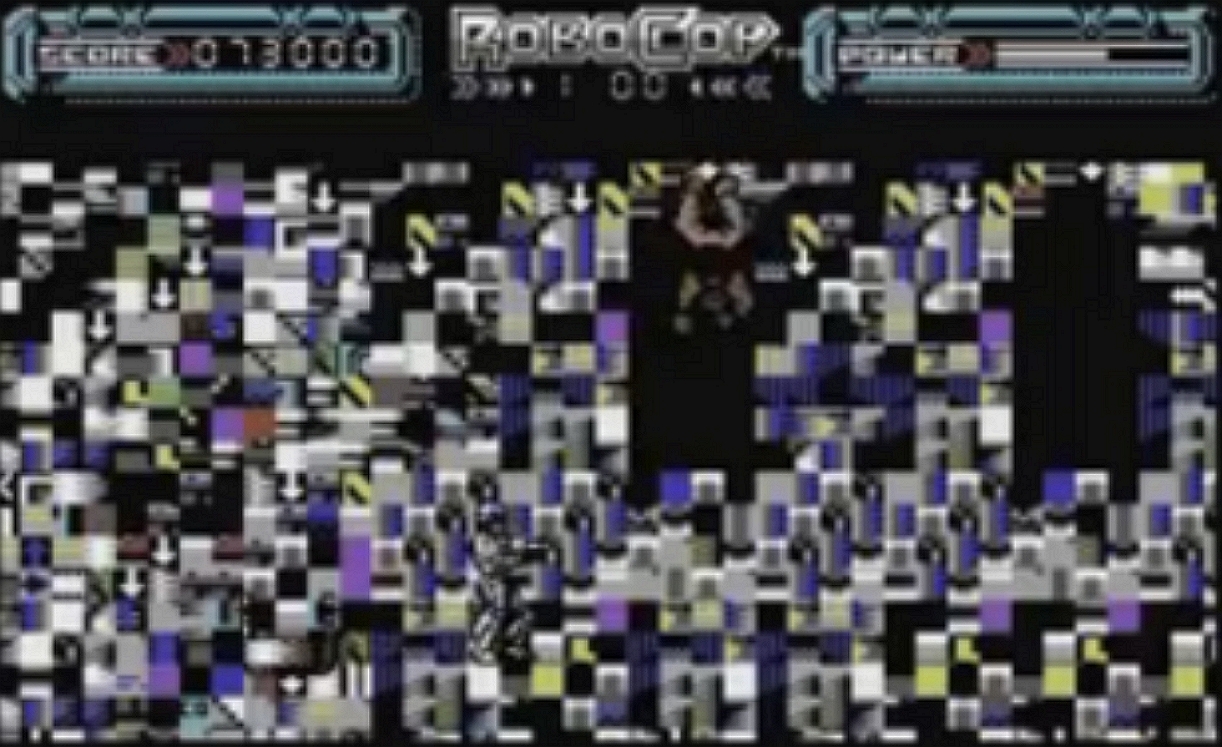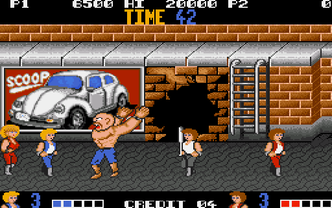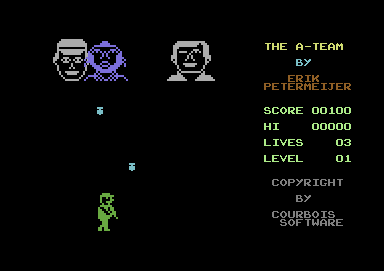We all know in the 80s, there were distinct markets - Asia, Europe, NA, etc. While Atari was crashing in the US, Nintendo was finding success in Asia with the Famicom. The Famicom did not have any protection against unlicensed 3rd party games, and those did proliferate.
In the US, while we gamers still were gaming, retailers gave video games a huge Nope, having taken losses. Nintendo of America had to make lots of changes that took 2 years - some in nomenclature, some in design, but one in architecture - the 10 NES chip.
This let the NES avoid the crap 3rd party games - which led to consumer trust and, together with the Gameboy, a legacy that has persisted.
Question - had Nintendo launched basically the Famicom in the US in 1984, it may have, by 1986, have been dealing with an ocean of 3rd parties putting out underdone games. Or, would avoiding buying properties like ET, plus making quality home experiences like Zelda, have won the field in the US anyway?
The 10NES chip and Nintendo success
-
ThePixelatedGenocide
- Posts: 1234
- Joined: April 29th, 2015, 9:06 pm
Re: The 10NES chip and Nintendo success
Just look at the European microcomputer scene, for the answers to this one. Zero quality control. And it thrived.
Which is the exact opposite of how things would go in America, because British gamers weren't paying $40 and $50 per game. And because western programmers could and would flood the market with the Acclaim/LJN strategy of hoarding hot licenses, only it'd be even worse. After all, without Nintendo's limits on the games they could bring to market, they could buy as many licenses as they wanted, and make it impossible for better studios to compete.
Just like US Gold. (Note: Not actually American.)
And if quality takes a dive to make this possible? (US Lead Poisoning, more like.) Seriously, just compare Robocop on NES vs. Robocop on C64 to understand the value of that Nintendo seal of quality. Robocop on C64 is brought to you by Ocean, who are like US Gold's respectable older brother.

They share a similar market philosophy of buying as many licenses as possible, but Ocean was once known for their high quality games. And Robocop? This multiplatform title was one of their top licensed games of all time. It's impact was similar to Goldeneye on N64, in terms of making a licensed title respectable and loved.
-2.jpg)
Meanwhile, the NES game has a weird Robocop sprite I won't even attempt to defend. Nobody made a quality gif of this. It's a 5-6 out of 10 licensed game of the era.
And it's easily the superior game.

Here's what Robocop's stage 7 looks like, on C64. You'll never reach it. Stage 6 is impossible to complete within the time limit, in order to hide the fact that the game was shipped to store shelves unfinished.
Still, it was a classic on the Spectrum and CPC. C64 fans who wanted the same game, simply got screwed over. It was just one of those problems that was taken for granted at the time.
Unfortunately, this sudden lack of quality control was the first hint of what Ocean would become. And how it would be remembered by console owners on the other side of the pond.
And it wasn't anything new.
Even all time Spectrum classic Jet Set Willy can't actually be finished.
Which doesn't even have the excuse of being made by a soulless corporation driven by pure greed.
And these are considered the good games. Or at least, they were back in the day. (Yes, there were better games.Chase HQ really shows off what the Spectrum could do in the right hands. But the fact that "completely unbeatable" was still considered reasonable is messed up.)
Things fall apart quickly below good.

Shown above: a state of the art gaming computer.
Imagine an NES library with these standards. Who knows how much worse everything would be, in order to make these more demanding deadlines?
And we're still nowhere near hitting the bottom of the barrel. You can see what Nintendo was afraid of, by checking out Super Monkey Daiboken on Famicom.

The graphics are the least of the problems.
Or the A-team on C64.

It's Space Invaders, but you're trying to headshot the A-Team. Also, you can't miss their giant, slow moving heads.
Then there's the more complicated problems.
Setting Super Mario Bros as the baseline for what people expected of a good NES game? Through an illegal monopoly of the American market, and having it as a pack-in when the system hit it big? Once the industry caught up, it elevated level design, and the industry as a whole. The people using Miyamoto's designs as a template range from Sonic Team, Rare, Naughty Dog, and Id software....among many, many others. And once Link to the Past and Super Metroid built off what their previous games offered?
.
There were all action games so polished, and offering so much beyond a difficulty ramp or a brief power-up rush, that the design philosophy they represented became seen as a respected art form here in the states, even when they weren't trying to say anything profound. (Not that we come anywhere near always living up to the ideal. But it was clear early on that the potential was there.)
Without that thought and consideration for the player experience? Some games get a lot more disposable. Others are a lot less user-friendly. It's just like the early 80's all over again.
Is it worth buying an older console for? Or even a newer one?
A lot of that inventory isn't going to sell. Especially if there's more competitors in a market this bad.
And we probably have another crash, like the one that wiped out British hardware manufacturers, and even American hardware manufacturers who were at the top of that industry, like Commodore and Atari.
Maybe consoles themselves are thought of as toys, that were just a passing fad, as computer prices become lower and more affordable. After all, launching a console can cost a company hundreds of millions of dollars.
Why take the risk? Maybe they go with cheaper parts, and a lot less incentive to make up the financial deficit through killer software.
By the time you reach the present day, I wouldn't be surprised if the console videogame industry looks a lot like the Ouya.
Or like the Sega Pico learning system.
Which is the exact opposite of how things would go in America, because British gamers weren't paying $40 and $50 per game. And because western programmers could and would flood the market with the Acclaim/LJN strategy of hoarding hot licenses, only it'd be even worse. After all, without Nintendo's limits on the games they could bring to market, they could buy as many licenses as they wanted, and make it impossible for better studios to compete.
Just like US Gold. (Note: Not actually American.)
And if quality takes a dive to make this possible? (US Lead Poisoning, more like.) Seriously, just compare Robocop on NES vs. Robocop on C64 to understand the value of that Nintendo seal of quality. Robocop on C64 is brought to you by Ocean, who are like US Gold's respectable older brother.

They share a similar market philosophy of buying as many licenses as possible, but Ocean was once known for their high quality games. And Robocop? This multiplatform title was one of their top licensed games of all time. It's impact was similar to Goldeneye on N64, in terms of making a licensed title respectable and loved.
-2.jpg)
Meanwhile, the NES game has a weird Robocop sprite I won't even attempt to defend. Nobody made a quality gif of this. It's a 5-6 out of 10 licensed game of the era.
And it's easily the superior game.

Here's what Robocop's stage 7 looks like, on C64. You'll never reach it. Stage 6 is impossible to complete within the time limit, in order to hide the fact that the game was shipped to store shelves unfinished.
Still, it was a classic on the Spectrum and CPC. C64 fans who wanted the same game, simply got screwed over. It was just one of those problems that was taken for granted at the time.
Unfortunately, this sudden lack of quality control was the first hint of what Ocean would become. And how it would be remembered by console owners on the other side of the pond.
And it wasn't anything new.
Even all time Spectrum classic Jet Set Willy can't actually be finished.
Which doesn't even have the excuse of being made by a soulless corporation driven by pure greed.
And these are considered the good games. Or at least, they were back in the day. (Yes, there were better games.Chase HQ really shows off what the Spectrum could do in the right hands. But the fact that "completely unbeatable" was still considered reasonable is messed up.)
Things fall apart quickly below good.

Shown above: a state of the art gaming computer.
Imagine an NES library with these standards. Who knows how much worse everything would be, in order to make these more demanding deadlines?
And we're still nowhere near hitting the bottom of the barrel. You can see what Nintendo was afraid of, by checking out Super Monkey Daiboken on Famicom.

The graphics are the least of the problems.
Or the A-team on C64.

It's Space Invaders, but you're trying to headshot the A-Team. Also, you can't miss their giant, slow moving heads.
Then there's the more complicated problems.
Setting Super Mario Bros as the baseline for what people expected of a good NES game? Through an illegal monopoly of the American market, and having it as a pack-in when the system hit it big? Once the industry caught up, it elevated level design, and the industry as a whole. The people using Miyamoto's designs as a template range from Sonic Team, Rare, Naughty Dog, and Id software....among many, many others. And once Link to the Past and Super Metroid built off what their previous games offered?
.
There were all action games so polished, and offering so much beyond a difficulty ramp or a brief power-up rush, that the design philosophy they represented became seen as a respected art form here in the states, even when they weren't trying to say anything profound. (Not that we come anywhere near always living up to the ideal. But it was clear early on that the potential was there.)
Without that thought and consideration for the player experience? Some games get a lot more disposable. Others are a lot less user-friendly. It's just like the early 80's all over again.
Is it worth buying an older console for? Or even a newer one?
A lot of that inventory isn't going to sell. Especially if there's more competitors in a market this bad.
And we probably have another crash, like the one that wiped out British hardware manufacturers, and even American hardware manufacturers who were at the top of that industry, like Commodore and Atari.
Maybe consoles themselves are thought of as toys, that were just a passing fad, as computer prices become lower and more affordable. After all, launching a console can cost a company hundreds of millions of dollars.
Why take the risk? Maybe they go with cheaper parts, and a lot less incentive to make up the financial deficit through killer software.
By the time you reach the present day, I wouldn't be surprised if the console videogame industry looks a lot like the Ouya.
Or like the Sega Pico learning system.
- scotland
- Posts: 2561
- Joined: April 7th, 2015, 7:33 pm
Re: The 10NES chip and Nintendo success
That was an amazing reply, and I quite agree. Funny how as you say, 0 quality control in Europe and it thrived, while the NES couldn't really make inroads at all.
Two different ecosystems, and I think we still see it today. Do you want to sample tons of cheap programs, and find the diamonds in the rough (even unfinished diamonds as you mention) or do you want to shell out the money for titles with a greater expectation of quality? The con to that is that the quality - counting on the hardware as well as the software - better be there.
Nintendo has survived misteps too, but always having at least some really quality games per console has cemented them in the marketplace. Where, even though Commodore and Sinclair have fun legacies, that's all they have - legacies.
Two different ecosystems, and I think we still see it today. Do you want to sample tons of cheap programs, and find the diamonds in the rough (even unfinished diamonds as you mention) or do you want to shell out the money for titles with a greater expectation of quality? The con to that is that the quality - counting on the hardware as well as the software - better be there.
Nintendo has survived misteps too, but always having at least some really quality games per console has cemented them in the marketplace. Where, even though Commodore and Sinclair have fun legacies, that's all they have - legacies.